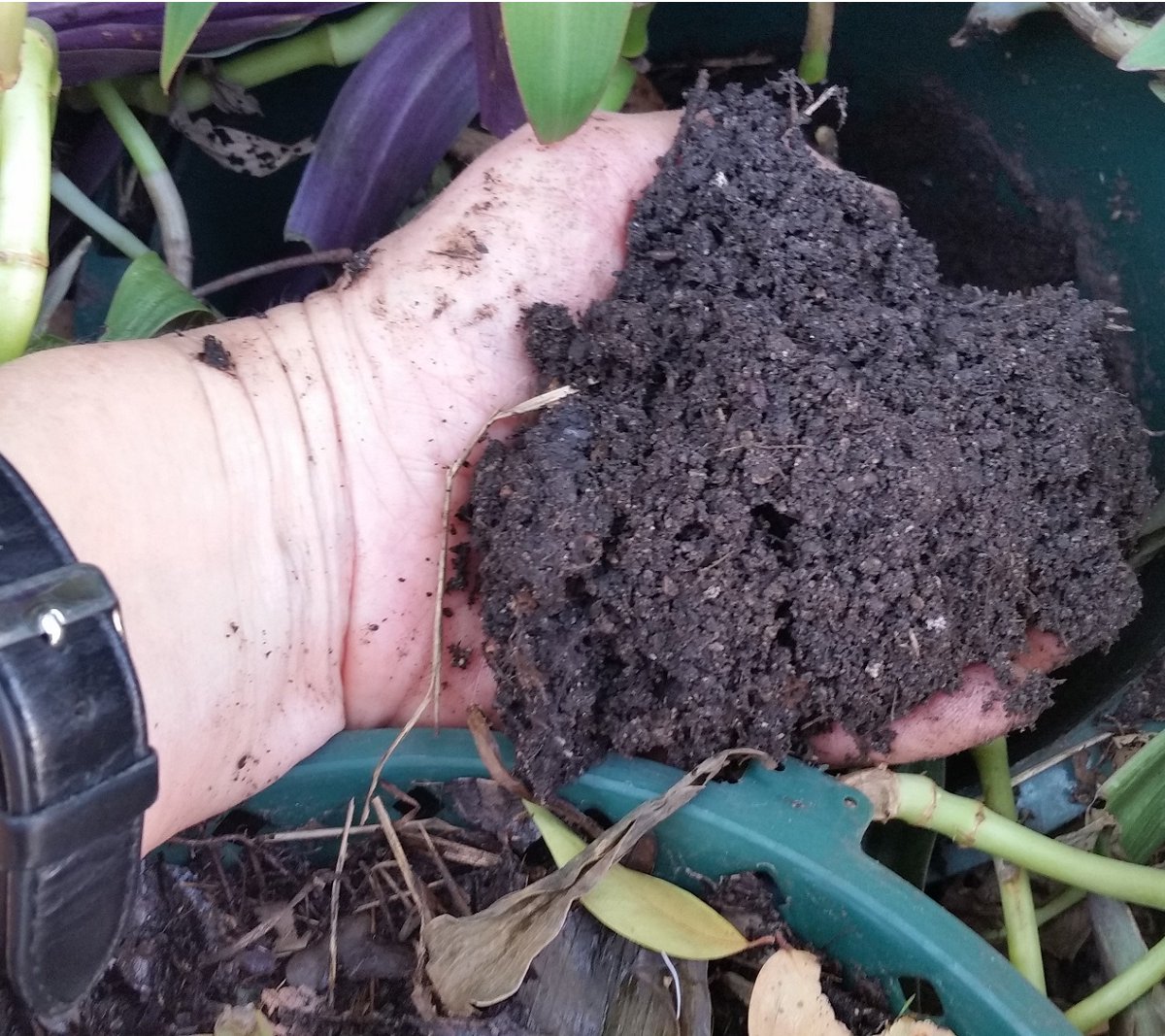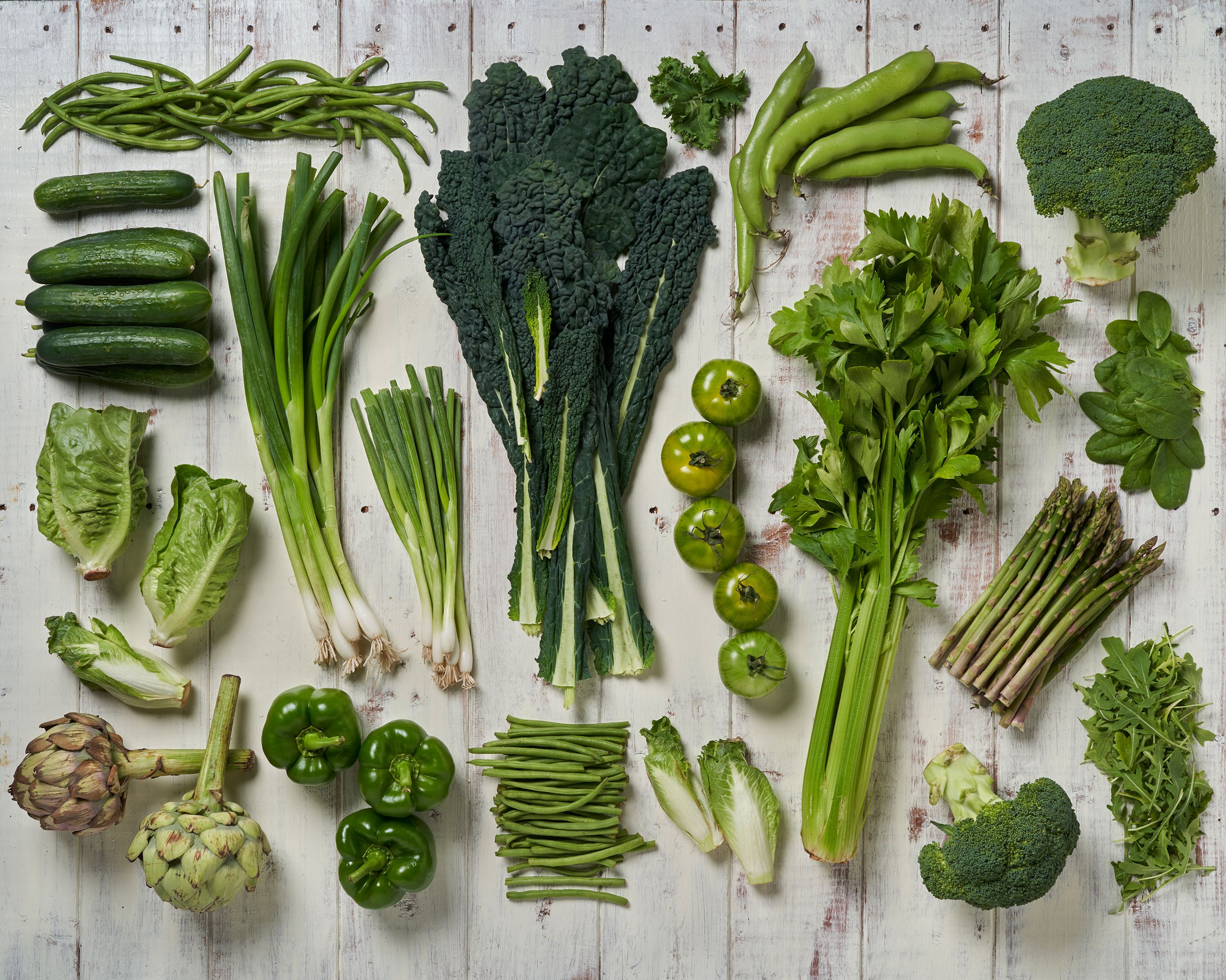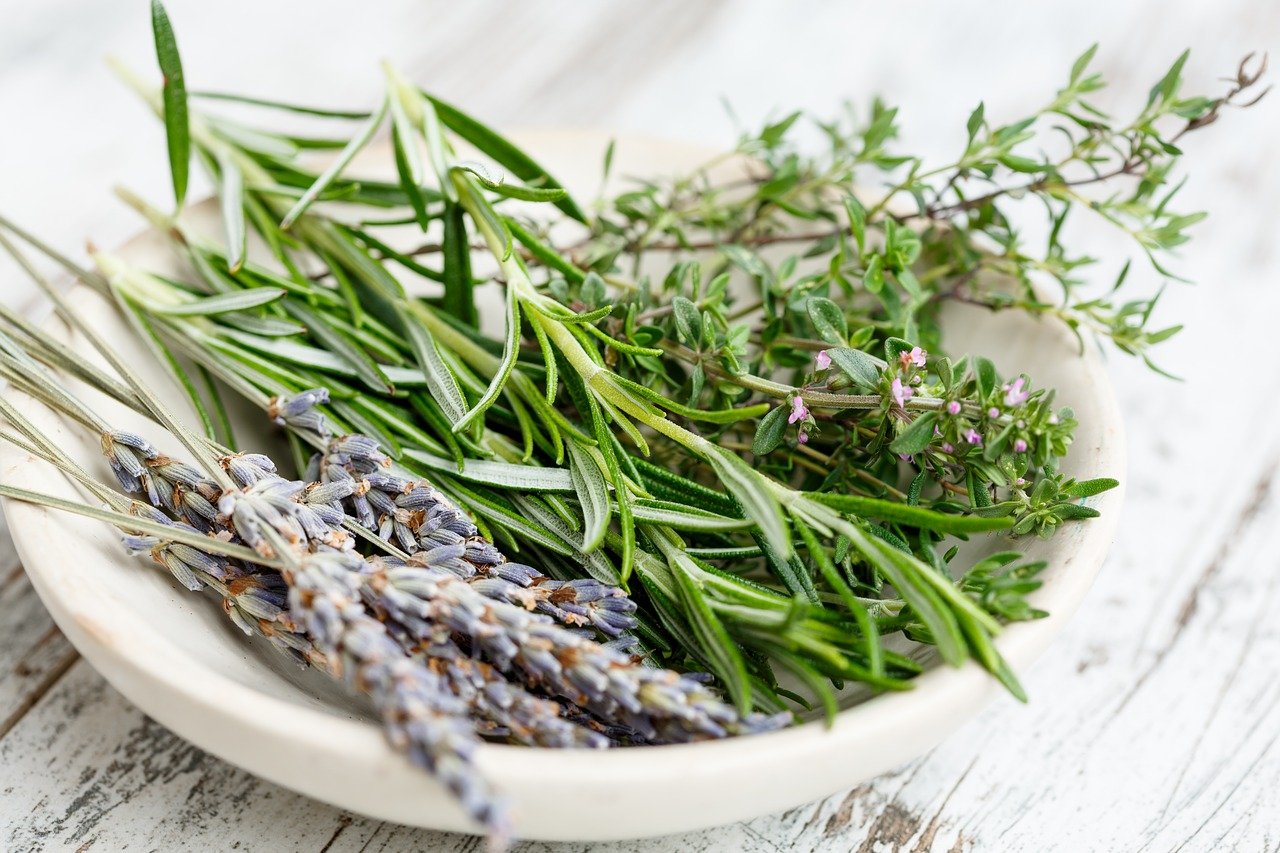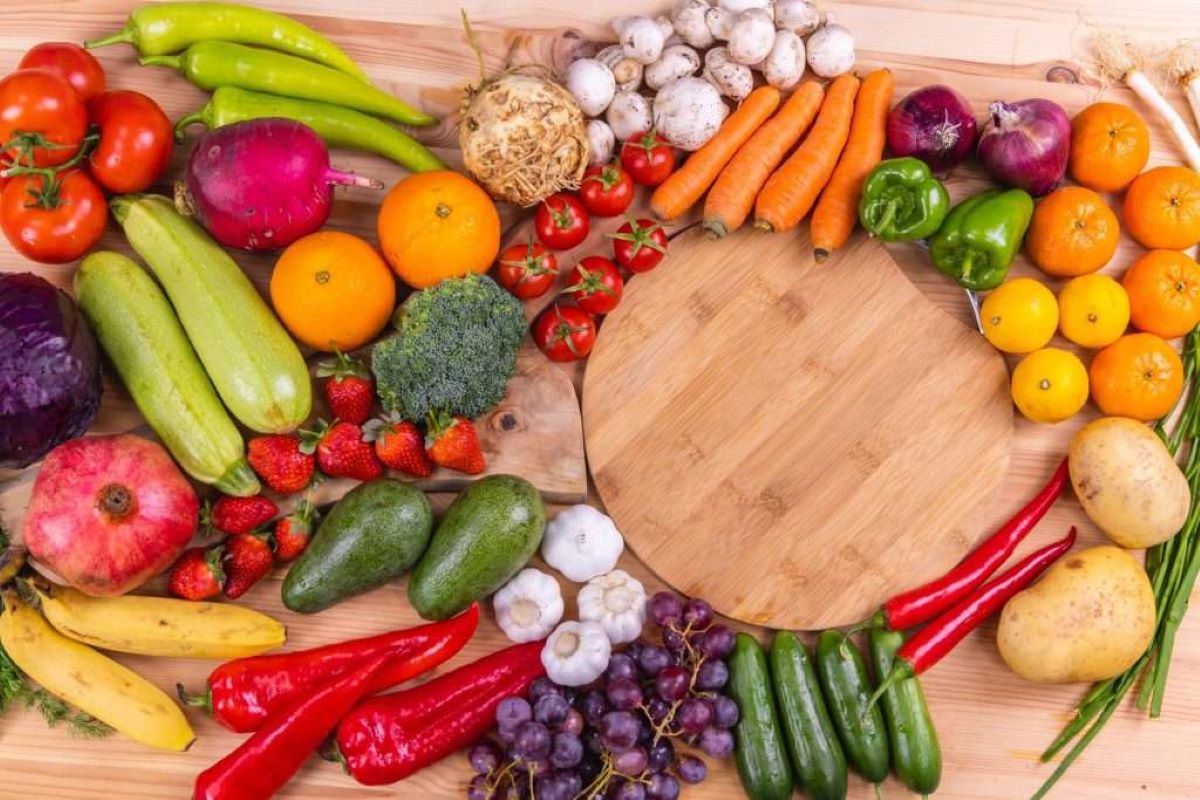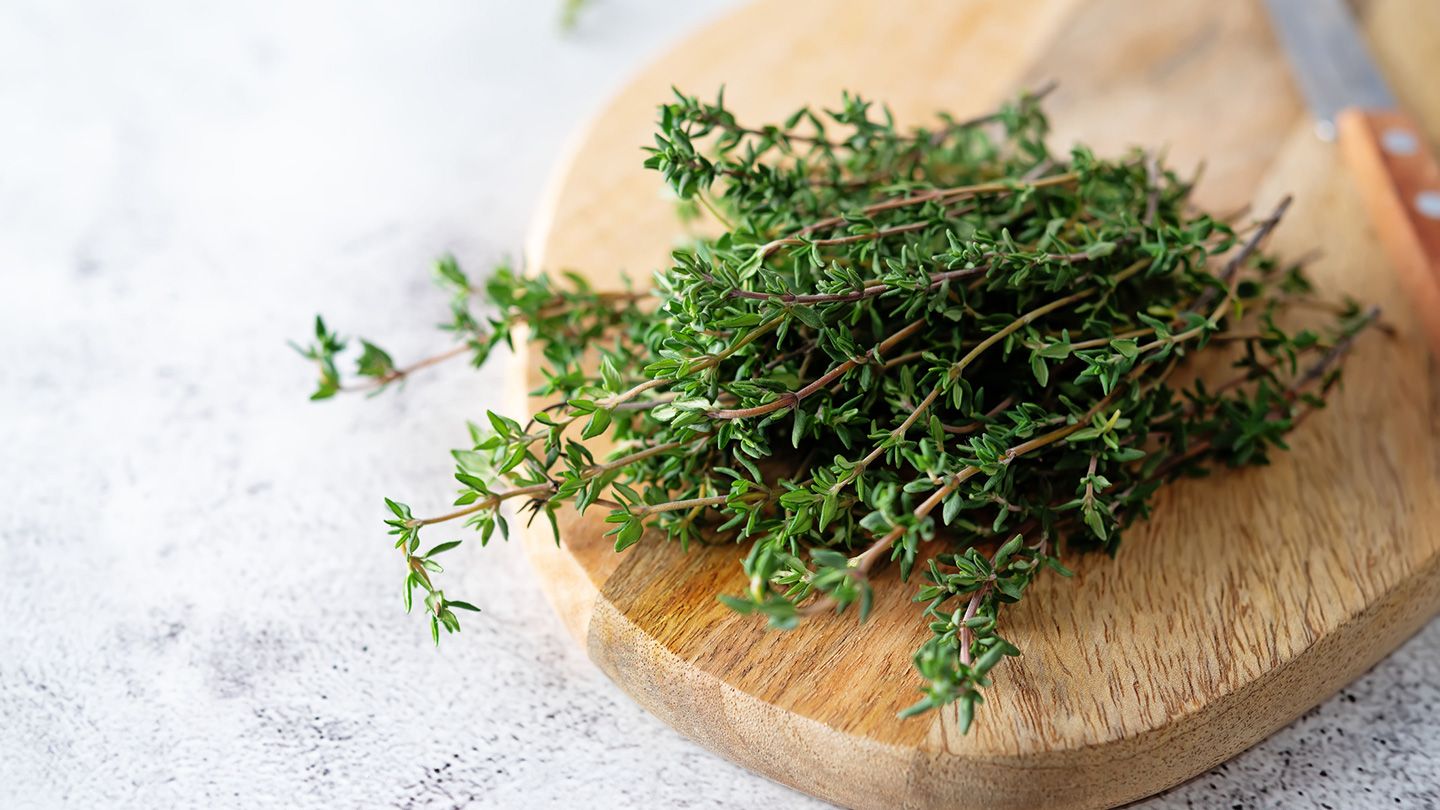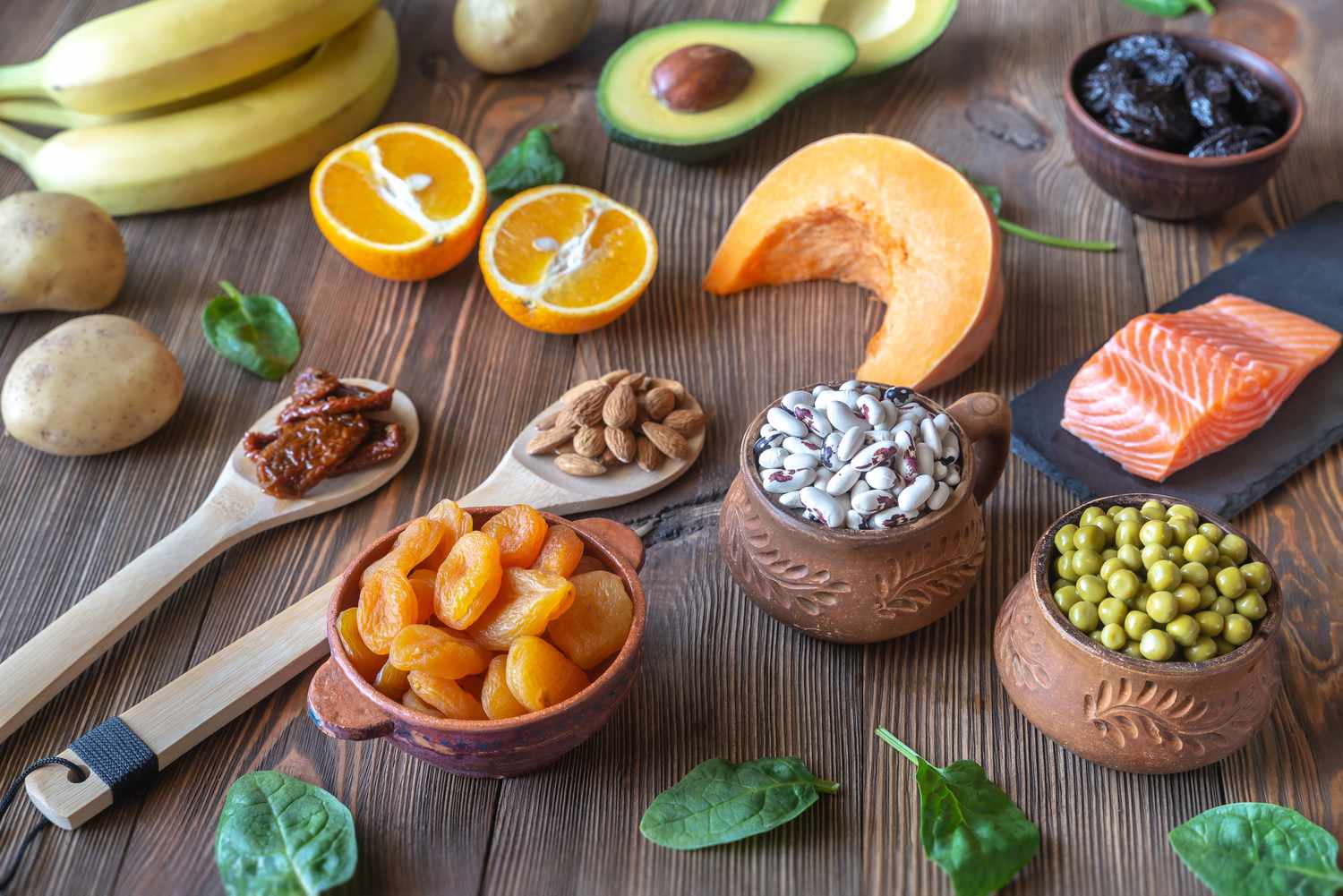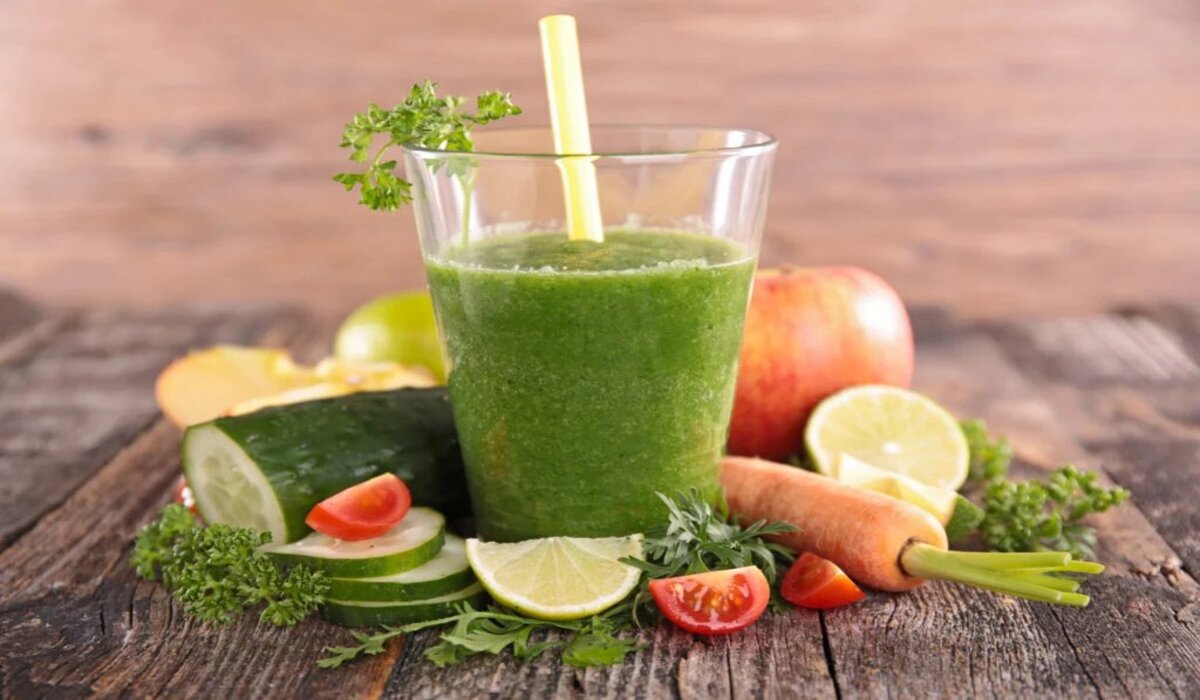Home>Gardening Tips and Tricks>Eco-Friendly Gardening>What Is Good Fertilizer For Plants
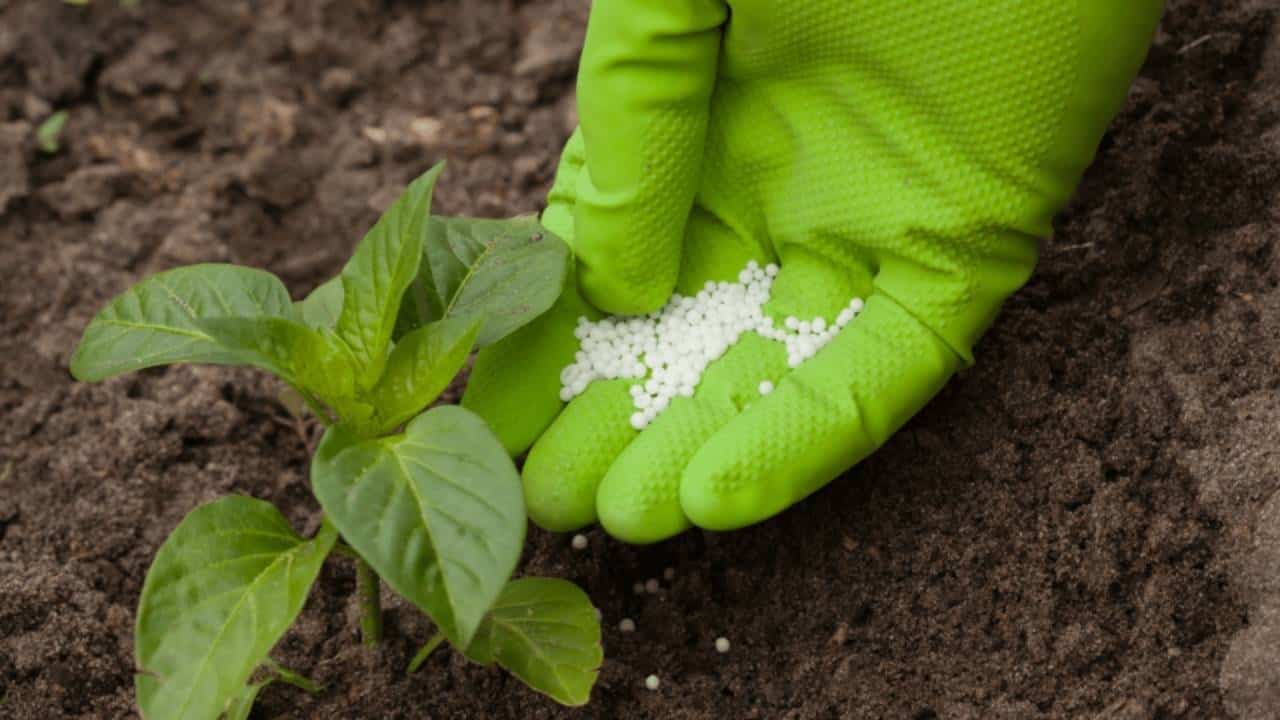

Eco-Friendly Gardening
What Is Good Fertilizer For Plants
Modified: January 22, 2024
Looking for an eco-friendly gardening solution? Discover the best fertilizer options for plants and promote sustainable gardening practices.
(Many of the links in this article redirect to a specific reviewed product. Your purchase of these products through affiliate links helps to generate commission for Chicagolandgardening.com, at no extra cost. Learn more)
Table of Contents
- Introduction
- Importance of Using Good Fertilizer
- Factors to Consider When Choosing Fertilizer
- Organic Fertilizers
- Inorganic Fertilizers
- Common Types of Plant Fertilizers
- Nutrient Requirements for Different Types of Plants
- How to Apply Fertilizer to Plants
- Signs of Over-Fertilization
- Signs of Under-Fertilization
- Best Practices for Fertilizing Plants
- Conclusion
Introduction
Welcome to the world of eco-friendly gardening, where you can create a sustainable and environmentally conscious haven in your own backyard. In today’s fast-paced and technology-driven world, it is more important than ever to adopt practices that contribute to the well-being of our planet. Eco-friendly gardening is a perfect way to do just that.
But what exactly is eco-friendly gardening? It encompasses a range of practices that aim to minimize harm to the environment, conserve resources, and promote the overall health of plants and ecosystems. From choosing the right plants to utilizing organic fertilizers, eco-friendly gardening takes a holistic approach to create a thriving green space.
By implementing eco-friendly gardening techniques, you can reduce water consumption, minimize chemical waste, and support the natural biodiversity in your garden. Not only will this contribute to the well-being of our planet, but it will also reward you with a beautiful and flourishing garden.
In this article, we will dive deeper into the world of eco-friendly gardening, with a specific focus on the use of good fertilizers for plants. We will explore the importance of using the right fertilizers, considerations when choosing them, and the different types available. Whether you are a seasoned gardener or just starting out, this guide will equip you with the knowledge to make informed decisions when it comes to fertilizing your plants.
So, let’s embark on this journey together and discover how to create an eco-friendly garden that not only enhances the beauty of your outdoor space but also contributes to the sustainability of our planet.
Importance of Using Good Fertilizer
Using good fertilizer is essential for the health and vitality of your plants. It provides them with the necessary nutrients for growth, development, and overall well-being. Choosing the right fertilizer is crucial in achieving optimal results in your garden. Let’s explore the importance of using good fertilizer in more detail.
Promotes Growth and Plant Health: Good fertilizer delivers essential nutrients, such as nitrogen, phosphorus, and potassium, to plants. These nutrients play a vital role in their growth and development. Nitrogen aids in leaf and stem growth, phosphorus promotes root development, and potassium enhances fruit and flower production. By providing plants with the nutrients they need, good fertilizer ensures they have the best chance to thrive and reach their full potential.
Improves Soil Fertility: Fertilizers can help improve the fertility of the soil. Over time, soil can become depleted of essential nutrients due to plant uptake, water leaching, and other factors. Adding fertilizer replenishes these nutrients, ensuring that your plants have access to a fertile and nutrient-rich growing medium. This, in turn, leads to healthier plants with stronger root systems and increased resistance to pests and diseases.
Enhances Nutrient Availability: In addition to providing nutrients, good fertilizer helps to improve the availability of these nutrients in the soil. It can balance the pH level and improve the soil structure, allowing plants to absorb the nutrients more efficiently. This ensures that the plants are able to access the nutrients they need for proper growth and development.
Promotes Environmental Sustainability: Using good fertilizer can have positive environmental impacts. Organic fertilizers, for example, are made from natural sources such as compost, manure, or plant remains. They are free from synthetic chemicals and are environmentally friendly. By choosing organic fertilizers, you can reduce the harmful impact of chemical runoff on waterways and soil, protecting the ecosystems in and around your garden.
Prevents Nutrient Deficiencies: Nutrient deficiencies can stunt plant growth, affect flowering and fruiting, and make plants more susceptible to diseases and pests. Good fertilizer ensures that plants receive a balanced supply of essential nutrients, reducing the risk of nutrient deficiencies and promoting overall plant health.
By understanding the importance of using good fertilizers, you can make informed choices for your garden. Next, we will explore the factors to consider when choosing the right fertilizer for your plants.
Factors to Consider When Choosing Fertilizer
Choosing the right fertilizer for your plants can be a daunting task with a wide array of options available on the market. However, considering certain factors can help you make an informed decision and ensure that you select the most suitable fertilizer for your specific needs. Here are some key factors to consider:
Plant Type: Different plants have varying nutrient requirements. Before selecting a fertilizer, consider the specific needs of your plants. For example, flowering plants may require higher levels of phosphorus, while leafy greens and vegetables benefit from nitrogen-rich fertilizers. Understanding the nutritional needs of your plants will help you choose a fertilizer that provides the necessary balance of nutrients.
Nutrient Ratio: Fertilizers are labeled with three numbers representing the ratio of nitrogen (N), phosphorus (P), and potassium (K) in the product. This ratio is often referred to as the NPK ratio. For instance, a fertilizer with an NPK ratio of 10-10-10 contains equal amounts of nitrogen, phosphorus, and potassium. Consider the specific nutrient requirements of your plants and choose a fertilizer with a balanced NPK ratio or one that matches the specific needs of your plants.
Soil Composition: Understanding the composition of your soil is crucial in selecting the right fertilizer. Conduct a soil test to determine its pH level and nutrient content. This will provide valuable information on any deficiencies that need to be addressed. Some fertilizers are formulated to address specific soil conditions, such as acidic or alkaline soil. By considering the needs of your soil, you can choose a fertilizer that will help optimize the nutrient content and pH balance.
Slow-Release vs. Quick-Release: Fertilizers come in different forms, including slow-release and quick-release formulations. Slow-release fertilizers gradually release nutrients over an extended period, providing a steady supply to plants. This can be advantageous as it reduces the risk of over-fertilization and prevents nutrient leaching. Quick-release fertilizers, on the other hand, release nutrients immediately, providing a rapid boost to plants. Consider the needs of your plants, the desired growth rate, and your gardening style to determine which type of fertilizer is best for you.
Environmental Impact: Consider the environmental impact of the fertilizer you choose. Synthetic fertilizers often contain chemicals that can be harmful to the environment, including waterways and beneficial organisms in the soil. Organic fertilizers, made from natural sources, are a more environmentally friendly option. They are free from synthetic chemicals, promote soil health, and are safe for wildlife and pets. By opting for organic fertilizers, you can reduce your ecological footprint and contribute to a healthier environment.
Price and Availability: Lastly, consider factors such as the price and availability of the fertilizer. Set a budget and compare prices among different brands and types of fertilizers. Additionally, consider the availability of the fertilizer in your area. Some specialty fertilizers or organic options may be more difficult to find locally, requiring online or specialized store purchases.
By considering these factors, you can choose a fertilizer that aligns with the needs of your plants, promotes healthy growth, and minimizes environmental impact. Next, we will explore the different types of fertilizers available for eco-friendly gardening.
Organic Fertilizers
Organic fertilizers are derived from natural sources and are a popular choice for eco-friendly gardeners. They offer numerous benefits for both plants and the environment. Let’s explore the advantages and types of organic fertilizers available.
Advantages of Organic Fertilizers:
- Environmentally friendly: Organic fertilizers are made from natural sources such as compost, animal manure, bone meal, and plant residues. They do not contain synthetic chemicals, which makes them safer for the environment.
- Sustainable: Organic fertilizers promote the recycling of organic waste material, reducing the amount of waste that goes to landfills.
- Improved soil health: Organic fertilizers enrich the soil with organic matter, which enhances soil structure, water retention, and microbial activity. This leads to healthier soil, improved nutrient availability, and increased plant growth.
- Reduced risk of nutrient leaching: Organic fertilizers release nutrients slowly, minimizing the risk of nutrient runoff and leaching into waterways. This helps to protect the surrounding ecosystem and promotes water conservation.
- Long-lasting effects: Organic fertilizers nourish the soil over a longer period of time, ensuring a steady supply of nutrients to plants.
Types of Organic Fertilizers:
- Compost: Compost is a natural fertilizer created from the decomposition of organic matter, such as kitchen scraps, yard waste, and plant materials. It enriches the soil with essential nutrients and improves soil structure.
- Manure: Animal manure, including cow, horse, and chicken manure, is a rich source of nutrients. It provides nitrogen, phosphorus, and potassium to plants. Make sure to compost or age manure before use to avoid burning plants with excessive ammonia levels.
- Bone Meal: Bone meal is made from ground animal bones and is high in phosphorus and calcium. It is particularly beneficial for promoting root development in plants.
- Seaweed and Kelp: Seaweed and kelp fertilizers are derived from marine plants. They are rich in trace minerals, growth hormones, and vitamins that promote plant growth, improve flowering, and increase resistance to environmental stress.
- Green Manure: Green manure crops, such as clover or alfalfa, are grown specifically to be tilled back into the soil. They help add organic matter, improve soil structure, and increase nitrogen levels.
When using organic fertilizers, it is important to follow recommended application rates and methods to ensure proper nutrient balance and prevent over-fertilization. Organic fertilizers provide a sustainable and environmentally friendly option for promoting plant health and vitality in your garden.
Inorganic Fertilizers
Inorganic fertilizers, also known as synthetic or chemical fertilizers, are commonly used in gardening and agriculture. While they may not be as environmentally friendly as organic fertilizers, they can still play a role in providing essential nutrients to plants. Let’s explore the advantages and considerations of using inorganic fertilizers.
Advantages of Inorganic Fertilizers:
- Precision and Control: Inorganic fertilizers are formulated with specific nutrient ratios, allowing gardeners to provide plants with precise amounts of required nutrients. This control can lead to targeted growth and improved yields.
- Quick Nutrient Availability: Inorganic fertilizers generally provide nutrients in readily available forms, allowing plants to quickly absorb them. This can be advantageous when plants need an immediate boost of nutrients.
- Convenience: Inorganic fertilizers are widely available and come in various forms, such as granules, powders, and liquid concentrates. They are easy to use and typically require minimal preparation.
- Nutrient Variety: Inorganic fertilizers offer a wide range of nutrient combinations, ensuring that plants receive the specific nutrients they need for optimal growth. This flexibility can be beneficial for addressing nutrient deficiencies in the soil.
Considerations of Inorganic Fertilizers:
- Environmental Impact: Inorganic fertilizers can have negative environmental impacts, especially when overused or misapplied. The excessive use of synthetic fertilizers can lead to nutrient runoff, polluting waterways and disrupting ecosystems. It is crucial to follow recommended application rates and consider the potential environmental consequences.
- Potential Soil Degradation: Inorganic fertilizers provide plant nutrients directly, but they do not contribute to improving long-term soil health. Over time, the repeated use of inorganic fertilizers without proper soil management practices can lead to soil degradation, reduced microbial activity, and nutrient imbalances.
- Chemical Dependency: Continuous dependence on inorganic fertilizers can create a reliance on external sources for plant nutrition. This can hinder the natural nutrient cycle in the soil and impact its ability to sustain long-term plant growth without added fertilizers.
- Loss of Organic Matter: Inorganic fertilizers do not contribute organic matter to the soil, which is essential for maintaining soil structure, water retention, and microbial activity. To counteract this, it is important to combine the use of inorganic fertilizers with organic amendments to ensure a balanced and healthy soil ecosystem.
When using inorganic fertilizers, it is crucial to follow proper application practices and be mindful of their potential environmental impact. Balancing the use of inorganic fertilizers with organic practices can help maintain soil health and minimize negative consequences while providing essential nutrients to your plants.
Common Types of Plant Fertilizers
When it comes to fertilizing your plants, there are several common types of fertilizers to choose from. Each type has its own characteristics and benefits. Let’s explore some of the most widely used plant fertilizers:
1. All-Purpose Fertilizers: These fertilizers are formulated to provide a balanced mix of essential nutrients, usually with an equal NPK ratio. They are commonly used for general plant maintenance and can be suitable for a wide range of plants, including flowers, vegetables, and shrubs.
2. Nitrogen-Based Fertilizers: Nitrogen (N) is a vital nutrient for promoting lush foliage and vegetative growth. Nitrogen-based fertilizers are formulated with a higher proportion of nitrogen compared to phosphorus and potassium. They are beneficial for leafy greens, lawns, and plants that require vigorous vegetative growth.
3. Phosphorus-Based Fertilizers: Phosphorus (P) plays a crucial role in promoting root development and flowering. Phosphorus-based fertilizers have a higher proportion of phosphorus compared to nitrogen and potassium. They are ideal for plants that require strong root systems and abundant blooms, such as flowering plants, fruits, and bulbs.
4. Potassium-Based Fertilizers: Potassium (K) is essential for overall plant health, promoting disease resistance, and enhancing fruit and flower production. Potassium-based fertilizers have a higher proportion of potassium compared to nitrogen and phosphorus. They are suitable for a variety of plants and play a crucial role in overall plant vitality.
5. Slow-Release Fertilizers: Slow-release fertilizers are designed to gradually release nutrients over an extended period. They provide a steady supply of nutrients to plants, reducing the risk of over-fertilization and nutrient leaching. Slow-release fertilizers are available in various formulations, including coated pellets and granules, and are beneficial for plants with long growing seasons or for gardeners seeking low-maintenance fertilization.
6. Liquid Fertilizers: Liquid fertilizers come in liquid form and are dissolved in water for easy application. They are quickly absorbed by plants, making them a convenient option for foliar feeding or as a root drench. Liquid fertilizers can provide a quick nutrient boost and are suitable for fast-growing plants or when immediate nutrient uptake is desired.
7. Organic Fertilizers: Organic fertilizers are derived from natural sources such as compost, manure, and plant residues. They provide a slow and steady release of nutrients, nourishing the soil and improving long-term soil health. Organic fertilizers are a popular choice for eco-friendly gardeners as they are environmentally friendly and contribute to the overall sustainability of the garden.
When selecting a fertilize r, consider the specific nutrient needs of your plants, the growth stage of the plants, and the desired results. It is also important to follow the application instructions provided by the manufacturer to avoid over-fertilization and potential damage to your plants.
Nutrient Requirements for Different Types of Plants
Understanding the specific nutrient requirements of different types of plants is crucial for providing them with the necessary fertilization. Different plants have distinct nutritional needs based on their growth habits and stages. Let’s explore the nutrient requirements for various types of plants:
1. Leafy Greens: Leafy green vegetables like lettuce, spinach, and kale require higher levels of nitrogen for lush foliage development. A well-balanced fertilizer with a higher nitrogen (N) content is ideal for these plants.
2. Fruiting Plants: Fruiting plants, such as tomatoes, peppers, and cucumbers, have high potassium (K) requirements to support fruit development. They also benefit from adequate phosphorus (P) for root growth and flowering. Look for a fertilizer with a higher proportion of phosphorus and potassium.
3. Flowering Plants: Flowering plants like roses, petunias, and marigolds have increased phosphorus (P) requirements to promote strong root systems and abundant blooms. They also benefit from moderate nitrogen (N) for healthy foliage growth. A fertilizer with a higher proportion of phosphorus and a moderate amount of nitrogen is ideal.
4. Bulbs: Bulb plants, including tulips, daffodils, and lilies, require phosphorus (P) for root and bulb development. A fertilizer with a higher proportion of phosphorus will help these plants produce strong and healthy bulbs.
5. Fruit Trees: Fruit trees like apple, orange, and cherry trees have various nutrient requirements throughout their lifecycle. During the early stages, they require nitrogen (N) for foliage growth. As they reach maturity, they need an appropriate balance of nitrogen, phosphorus (P), and potassium (K) to support fruit production and overall tree health.
6. Herbs: Herbs such as basil, parsley, and mint benefit from balanced fertilization. A well-rounded fertilizer with equal amounts of nitrogen (N), phosphorus (P), and potassium (K) will provide the necessary nutrients for optimal growth and flavor development.
7. Indoor Plants: Indoor plants have specific nutritional needs due to the limited availability of natural nutrients in indoor environments. A balanced fertilizer formulated for indoor plants, often with a 20-20-20 NPK ratio, can help provide the essential nutrients required for healthy growth.
It is important to note that these are general guidelines, and specific cultivars or individual plant preferences may vary. Always refer to specific plant care instructions or consult with a horticulturist or local gardening experts to determine the exact nutrient requirements for your specific plants.
How to Apply Fertilizer to Plants
Applying fertilizer correctly is essential to ensure that plants receive the nutrients they need without causing harm. Here are some guidelines for effectively applying fertilizer to your plants:
1. Read and Follow Instructions: Always read the instructions provided on the fertilizer packaging carefully. Follow the recommended application rates, timing, and instructions for proper use. This will help prevent over-fertilization, which can lead to nutrient imbalances and damage to plants.
2. Choose the Right Time: Apply fertilizer at the appropriate time based on the specific needs of your plants. Generally, it is best to fertilize in early spring or just before the growing season begins. Avoid fertilizing during periods of extreme heat or drought, as this can stress the plants.
3. Apply to Moist Soil: Water the soil before applying fertilizer to ensure that it is evenly distributed and absorbed. Moist soil helps nutrients penetrate the root zone more effectively.
4. Use Proper Application Techniques: For granular fertilizers, spread them evenly over the soil surface around the base of the plants. Avoid direct contact with the foliage, as this can lead to burns. For liquid fertilizers, dilute according to the instructions and apply directly to the soil or as a foliar spray.
5. Avoid Concentrated Application: Avoid applying fertilizer directly to the plant’s stem or crown. Concentrated fertilizer application can burn the plant tissue and cause damage. Spread the fertilizer evenly over a wider area around the plant.
6. Incorporate into the Soil: After applying granular fertilizer, gently incorporate it into the top layer of soil using a rake or cultivate the soil. This helps to ensure that the nutrients reach the root zone and are not washed away by rainfall or irrigation water.
7. Water After Application: After applying fertilizer, water the plants gently to help the nutrients disperse into the soil. This also reduces the risk of fertilizer burn and helps plants absorb the nutrients more effectively.
8. Regularly Monitor Plants: Keep a close eye on your plants after fertilization. Monitor their growth, appearance, and overall health. If you notice any signs of over-fertilization, such as burnt or yellowing leaves, adjust your fertilization practices accordingly.
9. Follow a Fertilization Schedule: Develop a fertilization schedule based on the specific needs of your plants. Some plants may require more frequent fertilization, while others may require less. Keep track of your fertilization activities to avoid overusing or underusing fertilizer.
By following these guidelines, you can ensure the proper application of fertilizer to support the growth and health of your plants. Remember, moderation is key, and understanding the needs of your plants will help you achieve the best results.
Signs of Over-Fertilization
While fertilizing your plants is important for their growth and health, over-fertilization can have adverse effects. It’s essential to recognize the signs of over-fertilization to prevent damage to your plants. Here are some common indicators of over-fertilization:
1. Burnt or Brown Edges: One of the telltale signs of over-fertilization is the appearance of burnt or brown edges on the leaves. This occurs when the concentration of salts in the soil becomes too high, causing dehydration and scorching of the leaf edges.
2. Wilting: Over-fertilized plants may exhibit wilting, even when the soil is moist. Excessive fertilizer can disrupt the plant’s ability to take up water, leading to wilting and drooping of leaves and stems.
3. Stunted Growth: Over-fertilization can hinder rather than promote plant growth. If you notice that your plants are not growing as vigorously as expected or have smaller than usual leaves, it may be a sign of an excessive nutrient load.
4. Leaf and Flower Drop: Excess fertilizer can cause plants to shed leaves or drop flowers prematurely. This stress response is often triggered by an imbalance of nutrients or salts in the soil.
5. Yellowing or Discolored Leaves: Over-fertilization can lead to nutrient imbalances, affecting the plant’s ability to absorb specific nutrients. This can result in yellowing or discoloration of the leaves, indicating a nutrient deficiency or excess.
6. Deformed or Abnormal Growth: Over-fertilized plants may exhibit deformed or abnormal growth patterns. This can include distorted leaves, shortened internodes, or irregularly shaped fruits or flowers.
7. Nutrient Toxicity: Excessive amounts of certain nutrients can become toxic to plants. Symptoms of nutrient toxicity can vary depending on the nutrient, but they may include leaf tip burn, leaf curling, or brown spots on the leaves.
8. Algae Growth: Over-fertilization can lead to an excessive nutrient load in the soil, which promotes the growth of algae in containers or stagnant water. If you notice green algae growth, it may indicate an imbalance in nutrient levels.
If you observe these signs of over-fertilization in your plants, it is essential to take corrective action. Start by flushing the soil with water to help leach out excess nutrients. Adjust your fertilization practices, following the recommended application rates and frequency. Analyze the nutrient content of your soil through a soil test to determine the appropriate fertilizer amendments.
By being vigilant and responsive to signs of over-fertilization, you can ensure the health and longevity of your plants and maintain a balanced nutrient environment in your garden.
Signs of Under-Fertilization
While it is important to avoid over-fertilizing your plants, under-fertilization can also have detrimental effects on their growth and overall health. Recognizing the signs of under-fertilization is essential to address nutrient deficiencies and ensure optimal plant development. Here are some common indicators of under-fertilization:
1. Slow or Stunted Growth: If your plants are growing at a slower pace than expected or appear stunted, it may be a sign of nutrient deficiencies. Insufficient fertilization can result in limited access to essential nutrients, hindering plant growth and development.
2. Pale or Yellowing Leaves: Yellowing or pale leaves, particularly in younger foliage, can indicate a lack of essential nutrients such as nitrogen (N). Insufficient fertilization can lead to nutrient deficiencies, resulting in leaf discoloration and reduced chlorophyll production.
3. Small Leaves or Fruits: Under-fertilized plants often produce smaller leaves or fruits compared to their well-fed counterparts. Lack of proper nutrients can impede cell division and expansion, resulting in reduced leaf and fruit size.
4. Delayed Flowering: Insufficient fertilization can delay or even inhibit the flowering process in plants that rely on a balanced nutrient supply, such as flowering annuals or perennials. Inadequate nutrients can disrupt the hormonal processes responsible for flower bud formation and maturation.
5. Weak or Thin Stems: Under-fertilized plants tend to have weaker and thinner stems, which can make them more prone to bending or snapping under the weight of leaves or flowers. Proper nutrition provides the building blocks for strong stem development.
6. Reduced Fruit or Seed Production: In crop plants, under-fertilization can significantly impact yield and seed set. Insufficient nutrients can limit flower development, pollen production, and fruit setting, resulting in poor harvests.
7. Increased Pest and Disease Susceptibility: Under-fertilized plants are generally more susceptible to insect pests and diseases. Weakened plants due to nutrient deficiencies have lower plant defenses, making them more attractive to pests and less resilient against pathogenic attacks.
8. Premature Leaf Drop: Under-fertilized plants may experience premature leaf drop or leaf senescence. Nutrient deficiencies can trigger plants to shed leaves prematurely in an effort to redirect resources to more essential parts, such as stems or roots.
If you observe these signs of under-fertilization in your plants, it is crucial to address the nutrient deficiencies promptly. Start by conducting a soil test to determine the specific nutrient deficiencies and amend the soil accordingly with the recommended fertilizers. Adjust your fertilization schedule to ensure regular and adequate nutrient supply, taking into account the specific requirements of your plants.
By recognizing the signs of under-fertilization and responding appropriately, you can provide your plants with the necessary nutrients, promoting healthy growth and preventing long-term deficiencies.
Best Practices for Fertilizing Plants
Fertilizing plants is a critical aspect of gardening that requires careful consideration and proper techniques. To ensure the success of your plants and minimize negative impacts, here are some best practices to follow when fertilizing:
1. Conduct a Soil Test: Before applying any fertilizer, it is important to know the current nutrient levels and pH of your soil. A soil test will provide valuable information about any nutrient deficiencies or imbalances, allowing you to choose the appropriate fertilizer and make necessary adjustments.
2. Follow the Fertilizer Label: Read and adhere to the instructions provided on the fertilizer label. Pay attention to the recommended application rates, frequency, and method of application. Over-fertilizing can harm plants and the environment, while under-fertilizing may lead to poor growth.
3. Apply Fertilizer at the Right Time: Timing is crucial when it comes to fertilization. Apply fertilizers during the recommended season or growth stage for optimal results. Fertilizing too early or too late in the season may not provide the intended benefits or can even harm plants.
4. Water Before and After Fertilizing: Water the soil thoroughly before applying fertilizer to ensure proper nutrient absorption. After fertilizing, water the plants again to help dissolve and disperse the fertilizer into the soil. This reduces the risk of fertilizer burn and encourages nutrient uptake.
5. Use Proper Techniques for Application: Apply granular fertilizers evenly across the soil surface around the plant’s drip line, avoiding direct contact with the stem or foliage. For liquid fertilizers, follow the dilution instructions and apply using a watering can or sprayer. Always aim for full coverage and even distribution.
6. Consider Slow-Release Fertilizers: Slow-release fertilizers deliver nutrients gradually over an extended period, providing a steady supply to the plants. Consider incorporating slow-release options into your fertilization routine to minimize the risk of over-fertilization and ensure sustained nutrient availability.
7. Maintain Proper Nutrient Balance: Pay attention to the nutrient requirements of your plants and choose fertilizers that provide the appropriate balance of nitrogen (N), phosphorus (P), and potassium (K). Assess the specific needs of different plants and adjust your fertilization strategies accordingly.
8. Use Organic Amendments: Incorporate organic amendments, such as compost or well-rotted manure, into your soil regularly. Organic matter improves soil structure, enhances nutrient retention, and supports beneficial microbial activity. This reduces the reliance on synthetic fertilizers and promotes overall soil health.
9. Monitor Plant Health: Regularly observe the health and growth of your plants to identify any signs of nutrient deficiencies or excesses. Adjust your fertilization practices as needed to address specific issues. Regular monitoring helps ensure that your plants receive the necessary nutrients for optimal growth and development.
By following these best practices, you can provide your plants with the right nutrients, maintain a healthy balance in the soil, and promote vigorous growth and abundant harvests.
Conclusion
Eco-friendly gardening and the use of good fertilizers are crucial elements in cultivating a sustainable and thriving garden. By adopting eco-friendly practices and choosing the right fertilizers, you can create a harmonious balance between the health of your plants and the well-being of the environment.
Throughout this article, we explored the importance of using good fertilizers, considering factors such as plant type, nutrient requirements, and environmental impact. We discussed the benefits of both organic and inorganic fertilizers, each with their own advantages and considerations.
We also delved into the signs of over-fertilization and under-fertilization, emphasizing the importance of proper fertilization techniques to avoid harm to plants and the ecosystem. Additionally, we provided best practices for fertilizing plants, including conducting soil tests, following fertilizer labels, and maintaining nutrient balance.
Remember, eco-friendly gardening goes beyond just fertilization. Consider implementing other sustainable practices such as water conservation, composting, and integrated pest management to further promote environmental stewardship in your garden.
Whether you are a seasoned gardener or new to the world of horticulture, the knowledge and considerations outlined in this article will help you make informed decisions when fertilizing your plants. By nurturing your garden in an eco-friendly manner, you can not only enjoy the beauty of nature but also contribute to the conservation of our planet.
So, let your garden flourish and thrive with the right fertilizers, while embracing sustainability and eco-consciousness every step of the way.

